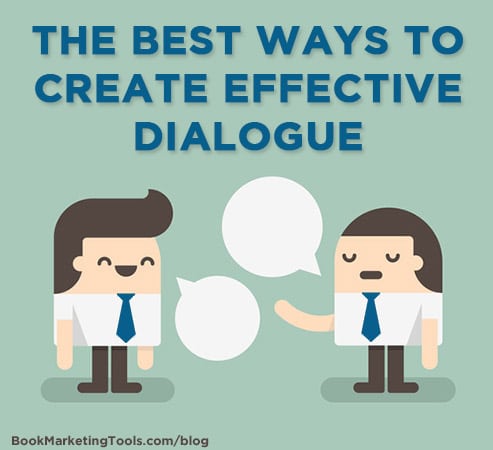As the author of 12 novels, including several bestsellers, I’ve found that the effective use of dialogue can greatly enhance your writing. Dialogue, when used correctly, can enhance your plot, make your characters come alive, and create tension and conflict, all key aspects in making your book a success. It also keeps your readers coming back for more.
Here are the best ways I’ve found to create effective dialogue:
Keep it Real
One of the key aspects of writing good dialogue is to make it sound like real people are talking with each other. A great way to learn this is by listening to how people talk. When I go to coffee shops and restaurants, I’ll listen to other people’s conversations. Not to spy on them, but to hear how they phrase things – you’ll notice right away that most conversations aren’t in full sentences – you’ll hear mono-syllables, half-sentences, phrases, arguments, etc. You’ll also pick up dialect and inflection. Another technique is to watch TV programs and movies, or listen to radio – here again, you can pick up memorable voices that crackle with authenticity. Lastly, read novels in the genre you write – you can learn quite a bit by how other authors write dialogue. One of my favorite authors is Robert Parker; he was a master in writing short, snappy conversations for his mystery thrillers.
Use Dialogue to Propel Your Plot
Conversations between your characters can propel your plot forward. I’ll give you an example. In the first chapter of my thriller KILLING WEST, the first two lines were dialogue:
“And if he won’t talk?” Rachel West asked.
Her CIA field officer took off his wire-frame eyeglasses and began cleaning them.
“In that case, Rachel, you kill him.”
Most people that read this will immediately want to know: What’s going on here? Intrigued, they’ll keep reading, which is what you want.
Another way to use dialogue is to disclose information – you see this all the time in TV dramas – usually two or three of the characters are discussing a case or a problem, knowing some of the facts, but not all, which is just like real life. You can dole out clues, even red herrings, as they talk, all the while creating suspense, tension, and conflict.
Create Tension and Conflict
All novels need conflict in order to be successful. Think about every great book you’ve ever read – they all had some major conflict. So how can you create conflict? One useful method is to use conversations to create that tension. It can be a lover’s quarrel, or someone being fired from their job, or a pregnant woman being told by her doctor that she’s going to miscarry. All these situations are ideally told through dialogue – if you did it through description, it wouldn’t have the impact of a people talking or arguing. I’ll give you an example from THE MEDIA MURDERS, my most recent J.T. Ryan thriller. In this novel, the FBI’s John (J.T.) Ryan and Erin Welch are investigating the suspicious deaths of several news reporters. In the book there’s a tension-filled, life-an-death conversation that takes place between the President of the U.S. and the FBI Director. I won’t give away the plot twist, but suffice it to say that this two-page-long dialogue changes the course of American history.
Don’t Forget Humor
One of the most effective ways to use dialogue is to have the characters interact humorously. My novels are serious in nature, with people often risking their lives. But I always include light-hearted moments. If you want your novel to come alive, the selective use of wit can be one of your best friends as a writer. Earlier I mentioned a couple of my main characters, J.T. Ryan and Erin Welch. Although the two admire each other for their job skills, their personalities are quite different. The beautiful and highly-intelligent Erin has a serious personality, while the John Ryan is much more laid-back, often making a joke, even when things are bleak, or if they’re in a dangerous situation. Their dialogue reflects this, creating tension between the two. An occasional use of humor and sarcasm will make your book much more readable and entertaining.
Less is More
When writing dialogue, keep these things in mind: (1) Once you establish who is speaking (especially in a two-person conversation) you don’t need to keep repeating the tag lines. An occasional ‘he said’ or ‘she said’ will suffice. (2) People don’t always answer questions when asked – sometimes when conversing, they ignore questions and stay silent. This can add drama and mystery. (3) Short conversations, using only a few words can many times be more dramatic than long, drawn-out soliloquies, which readers will find boring.
If you have questions about any of these techniques, feel free to contact me. My email is on my website. Also feel free to friend me on Twitter (where I have over 50,000 followers), or on Facebook, Goodreads, and Linkedin.
Lee Gimenez is the award-wining author of 12 novels, including several bestsellers. You can see his author page on Amazon here.

